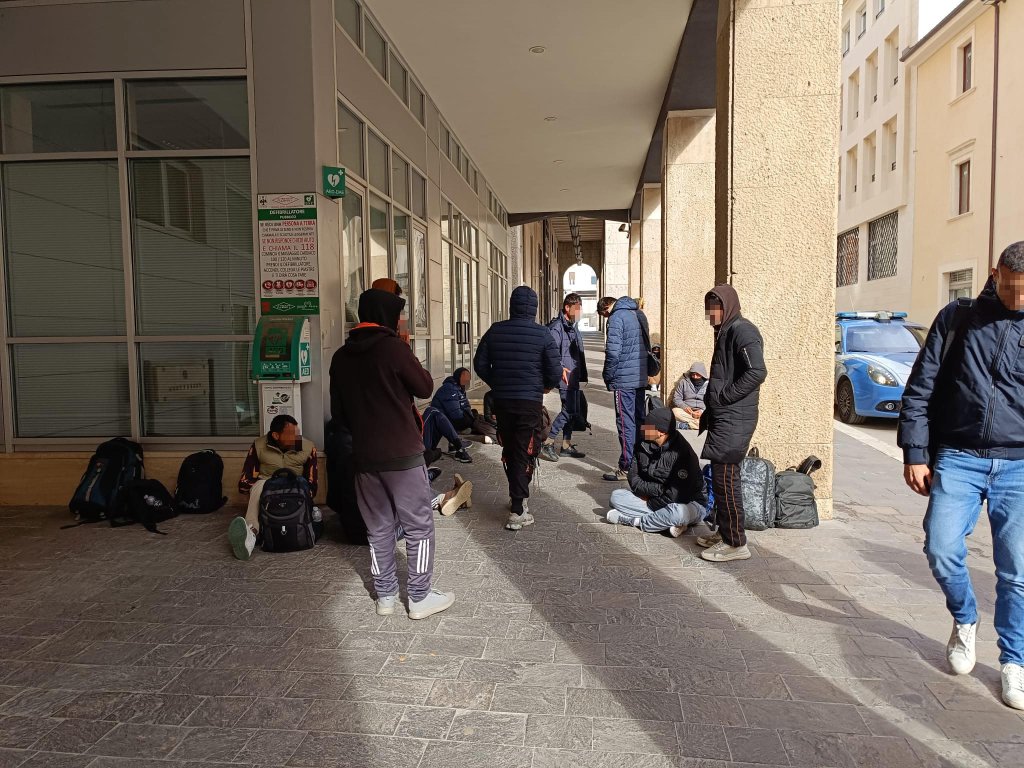The Italian city of L’Aquila in Abruzzo has recently become a destination for migrants, sparking political and social debate. Many of the arrivals, mostly young people, have been guided to the town not by official channels but through social media platforms such as TikTok. Posts, videos, and voice notes shared online have created informal “maps” that direct migrants to specific locations.
Migrants often arrive early in the morning outside government buildings, waiting silently with few belongings while hoping to request international protection. Many spend hours on benches, bus stop seats, and other makeshift shelters before the prefecture opens.
At first, a group of 44 migrants who reached L’Aquila was later transferred to a prefecture in Calabria. Many migrants do not register at formal shelters along the way; instead, they follow directions shared by peers and online influencers. Afghan, Pakistani, and Bangladeshi migrants make up most of the new arrivals, many traveling by land through the Balkan route.
Why is L’Aquila attracting migrants?
This is because social media and word of mouth highlight it as a smaller town where migration offices may process requests faster.
Influencers and migrants online share tips about residency permits, local associations, and registration efficiency, making L’Aquila appear a convenient destination.
One Afghan migrant, Maghdi, explained how he relied on screenshots of money transfers from relatives to continue the journey, guided by online advice. Another showed a TikTok video in Pashtu discussing opportunities in Italy, where L’Aquila was specifically mentioned. Over time, this informal network has created a new migration route to the town.
Migrants also share firsthand information on local services, such as the responsiveness of local migration offices and the quality of associations providing support. Smaller towns like L’Aquila, which previously received fewer arrivals, may have initially processed smaller groups more efficiently, further encouraging this trend.
However, Mayor Pierluigi Biondi of L’Aquila, from Giorgia Meloni’s governing party, disputes the social media theory. He claims the migrants were “sent to the prefecture by the usual profiteers who traffic human beings as if they were objects,” pointing to human traffickers rather than online guidance as a driving factor.
The phenomenon highlights how digital platforms and peer networks are increasingly influencing migration patterns in Europe, raising questions for local authorities on how to manage arrivals and ensure the protection of migrants and local communities.

